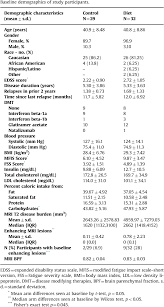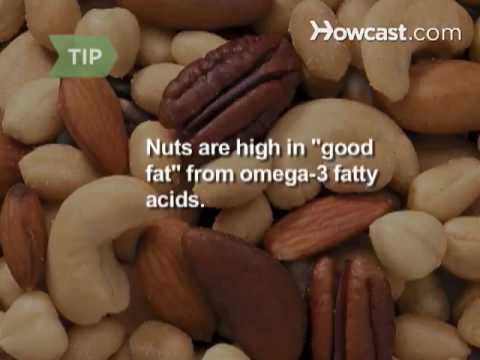
Latin America's women are one of the main influences on food choice. The programming of chronic disease in children may be affected by the diets of pregnant mothers. The Mediterranean diet may have an influence on the development of fetuses as well as on the health and well-being of their offspring. A lower BMI Z-score was associated with higher Mediterranean diet compliance. It's important to target pregnant mothers to encourage healthy diet choices.
Chickpeas
Chickpeas offer a rich source of plant-based vitamins and protein. You can find them in specialty markets, and you can buy them fresh or dried. They are versatile and affordable, making them a great staple food in Mediterranean cooking.
Quinoa
Quinoa adds variety to salads and is vegan-friendly, soy-free and gluten free. It is also free from refined sugar and nuts. It can be served cold or hot.
Quinoa grain bowl
Quinoa is a great option if you are trying to eat a plant-based diet. This nutritious grain provides you with lots of protein as well as fiber and Mediterranean-inspired flavors. It's also extremely affordable.

Multi-grain wraps
These wraps can be a great way for you to include a plant-based Mediterranean diet in your daily meals. These wraps are great for lunch and dinner, and have many health benefits. The Mediterranean diet includes a variety protein- and fiber-rich foods. It is a great way of increasing your intakes of these nutrients by including legumes such as chickpeas or lentils.
Mixed greens
You can eat more greens if you want to eat well. These vibrant green vegetables are rich in antioxidants and phytonutrients, which can help you feel fuller and more energized. You can use the Mediterranean diet guidelines to help you incorporate these foods into your daily life.
Tomatoes
The Mediterranean diet emphasizes plant-based healthy foods with less meat or dairy. This diet is rich in fish, which offers many health benefits.
Red wine
People often associate a Mediterranean diet and moderate red wine consumption with lower risk of developing heart disease. However, there is not a lot of evidence to support these claims. The Mediterranean diet has been associated with a lower risk of cardiovascular disease including strokes and heart attacks. It also contains moderate amounts of red wines (maximum five ounces daily for women and 10 for younger men). However, excessive alcohol consumption is linked to increased cancer risk and other health problems.
Beans
A plant-based Mediterranean diet should include beans. They're nutritious, filling, and simple to prepare. You can add them in soups, salads or pasta. Hummus can also be made by mixing chickpeas and tahini.

Lentils
Lentils can be a wonderful way to get vegetables on a Plant Based Mediterranean Diet. They are rich in fiber and protein and keep you full for a long time. Lentils are an excellent option for anyone looking for a nutritious side dish or a full meal.
Nuts
Nuts are a key part of a plant-based Mediterranean diet, and they offer a variety of benefits to your health. Nuts have been shown to decrease the risk of heart disease and other conditions including metabolic syndrome. Additionally, studies suggest that eating nuts can help to prevent weight gain.
FAQ
How often should I exercise?
For a healthy lifestyle, exercise is vital. However, there's no time limit on how much you should exercise. It is important to find something you enjoy, and then stick with it.
You should aim to do 20-30 minutes of moderate intensity exercise three times per week. Moderate intensity means you'll be breathing hard long after you're done. This type is good for burning around 300 calories.
If you prefer to walk, go for 10 minute walks four days a week. Walking is easy on the joints and has low impact.
You can also run for 15 minutes, three times per week. Running is a great way to burn off excess calories and build muscle tone.
If you're not used to exercising, start slowly. Start with just 5 minutes of cardio a few times a week. Gradually increase the time you do cardio until your goal is reached.
What is the most healthful lifestyle?
The healthiest lifestyle to live is one where you eat healthy food, exercise regularly, sleep well, and avoid stress. If you follow these guidelines, you will be able to lead a long and healthy life.
Starting small can make a big difference in your diet, and even your exercise routine. You can lose weight by walking 30 minutes each day if you are looking to lose weight. You can also take up dancing or swimming if you are looking to be more active. An online fitness program, such as Strava and Fitbit, can help you track your activity.
What should I eat?
Take in lots of fruits and veggies. These vegetables and fruits are rich in vitamins and minerals that will keep your immune system strong. Additionally, vegetables and fruits are high fiber. This helps to fill up and aids in digestion. Include at least five portions of fruit and vegetables per day.
Water is essential for your body. Water flushes out toxins and helps you feel full between meals. Drink about eight glasses each day.
Whole grains are better than refined grains. Whole grains retain all nutrients including B vitamins, iron and zinc as well as calcium, magnesium, calcium, protein, and magnesium. Some nutrients have been removed from refined grains.
Sugary drinks should be avoided. Sugary drinks are loaded with empty calories and contribute to obesity. Instead, opt for water, milk, or unsweetened tea.
Avoid fast food. Fast food lacks nutritional value. While it might taste good, it won't give your body the energy it needs to function properly. Stick to healthier options such as salads, soups, sandwiches, and pasta dishes.
Limit your alcohol intake. Avoid alcohol as it can cause empty calories and poor nutrition. Limit the amount of alcohol you consume in a given week to no more than 2 alcoholic beverages.
Reduce red meat intake. Red meats are high in saturated fat and cholesterol. Choose lean cuts such as beef, pork and lamb, chicken, fish, or turkey.
What's the difference between fat/sugar?
Fat is an important energy source, which comes from food. Sugar is a sweet substance found naturally in fruits and vegetables. Both sugars, and fats, have the same calories. Fats however, have more calories than sugars.
Fats are stored in the body and contribute to obesity. They may cause cholesterol buildup and lead to strokes or heart attacks.
Sugars are quickly absorbed and provide instant energy. This causes blood glucose levels rise. High blood glucose levels can be dangerous because it increases the risk of developing type II diabetes.
Does being cold give you a weak immune system?
It has been said that there are two types of people on the planet: those who love winter or those who hate it. It doesn't really matter whether you love winter or you hate it. You might wonder why you feel so bad when it's cold.
The truth is that our bodies are built to function in warm temperatures. Our bodies were designed to thrive in hot weather because this is where the majority of our food sources are.
But now we live in an environment that is very different from how our ancestors lived. We spend much more time indoors and are exposed to extreme temperatures (cold, heat) and eat processed foods instead of fresh.
Our bodies don't have the ability to tolerate extreme conditions anymore. It means that when we do go outdoors, our bodies feel tired, sluggish even sick.
There are some ways to reduce these side effects. You can combat these effects by making sure you are well-hydrated all day. Hydration is key to keeping your body well hydrated, flushing out toxins and maintaining a healthy weight.
You must also ensure that you are eating healthy foods. Eating nutritious foods helps your body maintain its optimal temperature. This is especially beneficial for anyone who spends a lot of time inside.
It is worth taking a few extra minutes each day to meditate. Meditation is a great way to relax your body and mind. It makes it easier for you to cope with stress and illness.
Statistics
- nutrients.[17]X Research sourceWhole grains to try include: 100% whole wheat pasta and bread, brown rice, whole grain oats, farro, millet, quinoa, and barley. (wikihow.com)
- In both adults and children, the intake of free sugars should be reduced to less than 10% of total energy intake. (who.int)
- This article received 11 testimonials and 86% of readers who voted found it helpful, earning it our reader-approved status. (wikihow.com)
- WHO recommends consuming less than 5% of total energy intake for additional health benefits. (who.int)
External Links
How To
What does the word "vitamin" mean?
Vitamins can be described as organic compounds found in food. Vitamins help us absorb nutrients from foods we eat. The body cannot make vitamins; therefore, they must be obtained from food.
There are two types: water-soluble and fat-soluble vitamins. Water-soluble vitamins dissolve quickly in water. Examples include vitamin C,B1 (thiamine), B2 (riboflavin), B3 (niacin), B6 (pyridoxine), folic acid, biotin, pantothenic acid, and choline. Fat soluble vitamins are stored in the liver and fatty tissue. Vitamin D, E, K and A are some examples.
Vitamins are classified according to their biological activity. There are eight major groups of vitamins:
-
A - essential for normal growth and maintenance of health.
-
C – essential for proper nerve function.
-
D - Essential for healthy teeth and bones.
-
E - needed for good vision and reproduction.
-
K - required for healthy muscles and nerves.
-
P – Vital for building strong bones.
-
Q - aids in digestion of iron and iron absorption
-
R - Required for red blood cell production
The recommended daily intake (RDA), of vitamins varies with age, gender and physical conditions. RDA values are set by the U.S. Food and Drug Administration (FDA).
For adults aged 19 and older, the RDA for vitamin B is 400 micrograms daily. Because it is essential for the development of the fetus, pregnant women should consume 600 micrograms per days. Children ages 1-8 require 900 micrograms per day. Infants below one year of age need 700 micrograms daily. But, between 9 months to 12 months of age, the amount drops to 500micrograms per days.
Children aged 1-18 require 800 micrograms of sugar per day, while those who weigh more than 1200 need 1000. For their nutritional needs, underweight children need 1200 mg per day.
Children aged 4-8 who have anemia are required to consume 2200 micrograms of Vitamin C daily.
2000 micrograms per person is necessary for general health. Breastfeeding or pregnant women require 3000 micrograms per daily due to higher nutrient demands.
1500 micrograms is the recommended daily intake for adults aged 70+, as they lose 10% of their muscle every ten years.
Women who have been pregnant or are lactating require more than the RDA. Pregnant women require 4000 micrograms daily during pregnancy, and 2500 micrograms every day after birth. Breastfeeding mothers need 5000 mg per day when breastmilk is being produced.